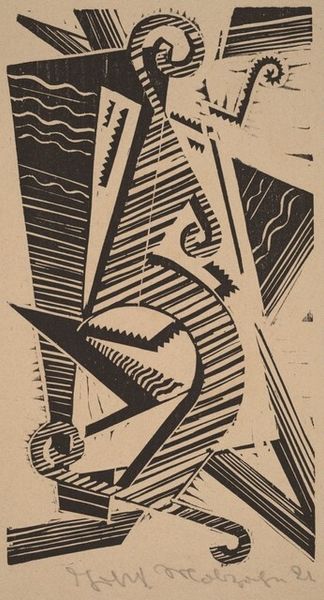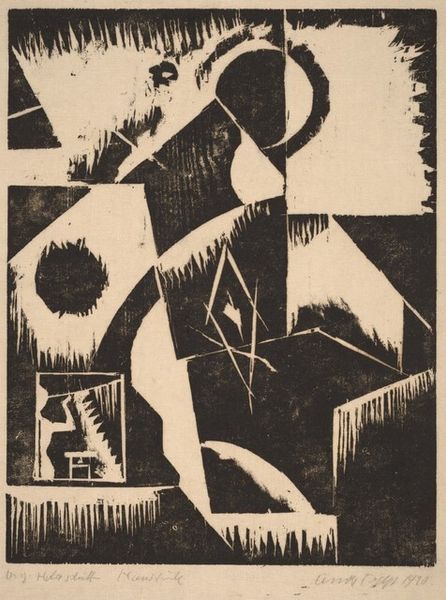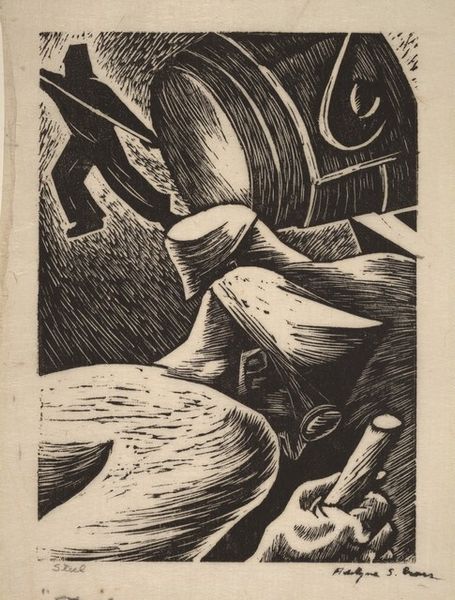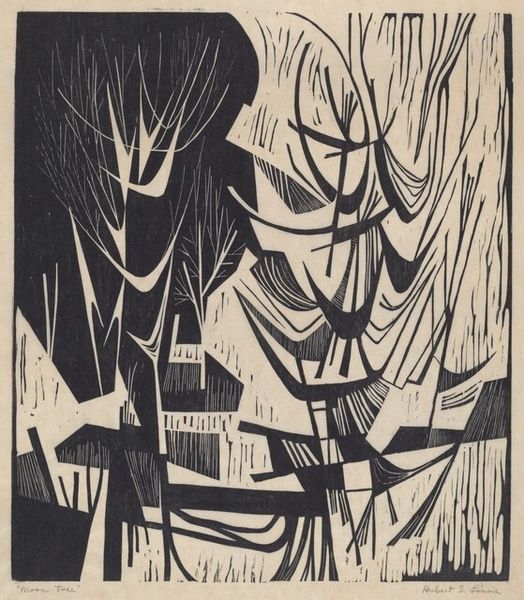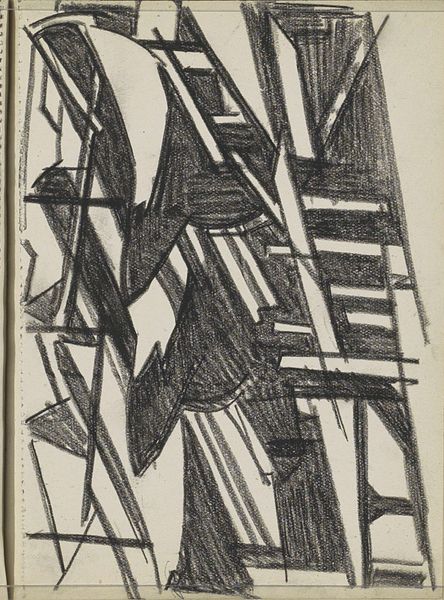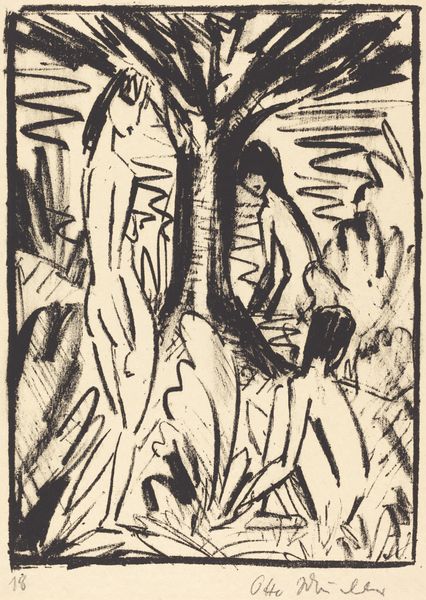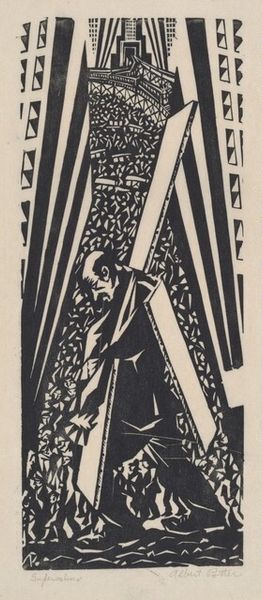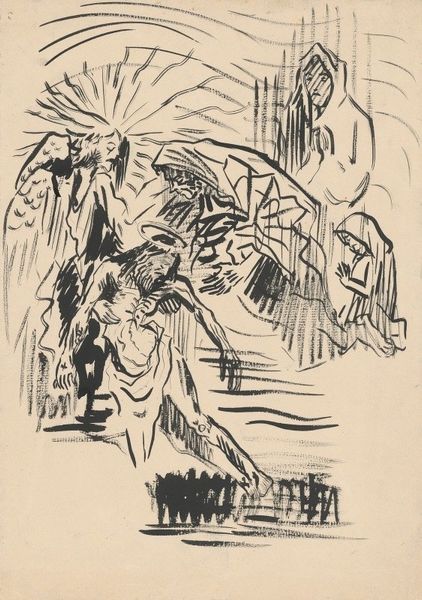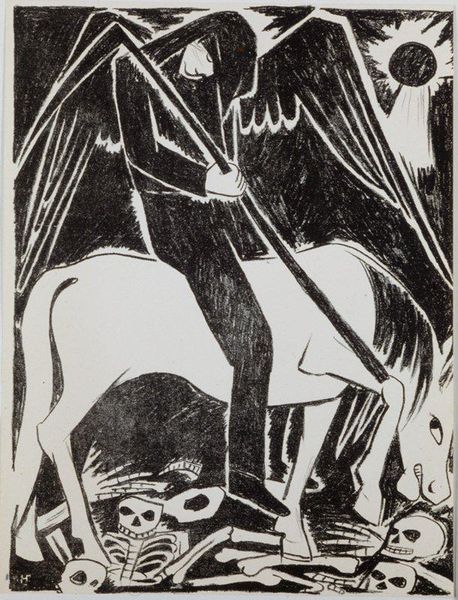
drawing, graphic-art, print, woodcut
#
drawing
#
graphic-art
#
pen drawing
# print
#
woodcut
#
abstraction
#
line
Dimensions: image: 102 x 140 mm paper: 114 x 165 mm
Copyright: National Gallery of Art: CC0 1.0
Editor: Here we have "Progress", a 1928 woodcut by Lowrie Lyle Warrener. It's a striking composition, all stark black and white, with a definite angular feel. I am struck by how the title clashes with the struggle portrayed in the picture. What's your interpretation of this work? Curator: Notice the stark contrast in tonality and the use of line. Warrener reduces the mountainscape to essential forms. The climbers are rendered minimally; their laborious journey highlighted by the steep diagonals of the mountains. Consider the directionality, with all the vectors driving the eye upward. Editor: So, the artist deliberately used upward lines to communicate a sense of... aspiration? Curator: Precisely. And examine how Warrener employed the woodcut medium itself. The sharp, unyielding cuts reinforce the ruggedness of the terrain, further emphasizing the strenuous ascent. It's about line, shape, contrast—all meticulously crafted. Editor: The texture created by the linework is really compelling. It looks very intentional, more than a basic depiction of rock and light. Curator: Indeed. One can analyze it simply as a formal interplay of light and shadow; notice where the composition invites your eye to travel and where it halts or lingers. Forget, for a moment, any presumed symbolism. How do the pure visual elements speak to you? Editor: Okay, when I look at the balance of negative and positive space, and the repetition of the triangles that create the peaks... it does feel more abstract, even mathematical, than representative. Curator: It shows how form and structure constitute meaning and effect. Disregarding any narrative function, what does the composition *do* to the viewer? Editor: This viewpoint has offered me a fresh approach to understanding how such elements operate independently from overt themes, providing deeper meaning. Curator: It helps isolate aspects which analysis from other approaches might overlook or downplay.
Comments
No comments
Be the first to comment and join the conversation on the ultimate creative platform.
